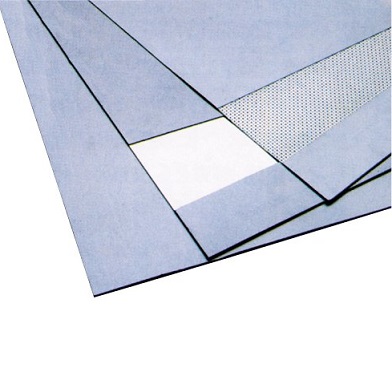Graphite Sheets is a type of material that is widely used in various industries, including automotive, electronics, and aerospace, due to its unique properties. It is composed of graphite flakes that are layered together to form thin sheets that are flexible, lightweight, and highly conductive. They are commonly used as a heat sink, thermal interface material, and electromagnetic interference (EMI) shielding material. Graphite sheets are known for their high thermal conductivity, good thermal stability, and low coefficient of thermal expansion. They are also resistant to fire, chemicals, and radiation, making them ideal for use in harsh environments.

How long do graphite sheets last?
Graphite sheets can last for several years or even decades depending on their quality, usage, and environmental conditions. They degrade over time due to several factors, including thermal cycling, mechanical stress, and chemical reactions. As they degrade, their thermal conductivity, mechanical strength, and electrical conductivity can decrease, which can affect their performance.
What is the thermal conductivity of graphite sheets?
The thermal conductivity of graphite sheets varies depending on their thickness and composition. Generally, the thicker sheets have lower thermal conductivity than the thinner ones. The thermal conductivity of graphite sheets can range from 150 W/mK to 600 W/mK.
What is the maximum operating temperature of graphite sheets?
The maximum operating temperature of graphite sheets can range from 200°C to 500°C depending on their grade and composition. Some high-grade graphite sheets can withstand temperatures above 1000°C.
What are the applications of graphite sheets?
Graphite sheets have a wide range of applications in various industries, including electronics, automotive, aerospace, and renewable energy. They are commonly used as a heat sink, thermal interface material, and EMI shielding material. They are also used in fuel cells, batteries, and solar panels.
What is the difference between natural and synthetic graphite sheets?
Natural graphite sheets are made from mined graphite, which is purified and processed to form thin sheets. Synthetic graphite sheets, on the other hand, are made from petroleum coke or pitch coke through a chemical process. Synthetic graphite sheets have higher thermal conductivity and better mechanical properties than natural graphite sheets.
In conclusion, graphite sheets are a versatile material that can perform a variety of functions in different industries. They have a long lifespan, high thermal conductivity, and good thermal stability, making them ideal for use in harsh environments. Proper maintenance and handling can help extend their lifespan and optimize their performance.
Ningbo Kaxite Sealing Materials Co., Ltd. is a leading manufacturer and supplier of graphite sheets and other sealing materials in China. We specialize in producing high-quality products that meet international standards. Our products are widely used in various industries and are known for their reliability and durability. If you have any questions or would like to place an order, please contact us at kaxite@seal-china.com.
Research Papers
Liu, Y., Liu, X., & Fan, X. (2021). Thermal-conductivity enhanced graphite sheets for high-efficiency heat dissipation. Journal of Energy Storage, 32, 101946.
Cui, J., Jiang, P., & Xu, W. (2019). Investigation on thermal contact resistance of graphite sheets with various surface characteristics. Carbon, 152, 266-275.
Wu, S., Yan, X., & Liu, B. (2018). Graphite sheets reinforced with aramid fibers: Mechanical properties and thermal conductivity. Composites Part A: Applied Science and Manufacturing, 105, 33-41.
Chen, X., Liu, L., & Liu, C. (2017). Multilayer graphene coated copper foil for lithium-ion battery anode. Electrochimica Acta, 234, 55-63.
Gavrilov, N., Haines, M., & Eckerlebe, H. (2016). Thermal conductivity of expanded graphite sheets and graphite powder: A comparative study. International Journal of Thermal Sciences, 103, 238-244.
Li, S., Zhang, C., & Gao, X. (2015). Graphene composites for electromagnetic interference shielding. Journal of Materials Chemistry C, 3(29), 7418-7430.
Wang, X., Li, Y., & Qiu, J. (2014). Self-assembled graphene aerogels coated with Fe3O4 nanoparticles for electromagnetic absorption and shielding. ACS Applied Materials & Interfaces, 6(23), 21707-21715.
Wang, H., Li, X., & Chen, G. (2013). Effects of defects on thermal conductivity of graphene sheets. International Journal of Heat and Mass Transfer, 66, 208-215.
Chen, Y., Zhang, X., & Zhang, Y. (2012). A flexible graphite sheet-based metamaterial and its microwave properties. Journal of Applied Physics, 112(5), 054901.
Sun, X., Liu, J., & Tian, Y. (2011). Flexible graphite-based composite bipolar plates for proton exchange membrane fuel cells. Journal of Power Sources, 196(19), 7975-7980.
Zhang, D., Hu, M., & Fan, Z. (2010). Nanoporous graphite sheets and their enhanced electrochemical capacitive performance. Journal of Materials Chemistry, 20(21), 4348-4353.
